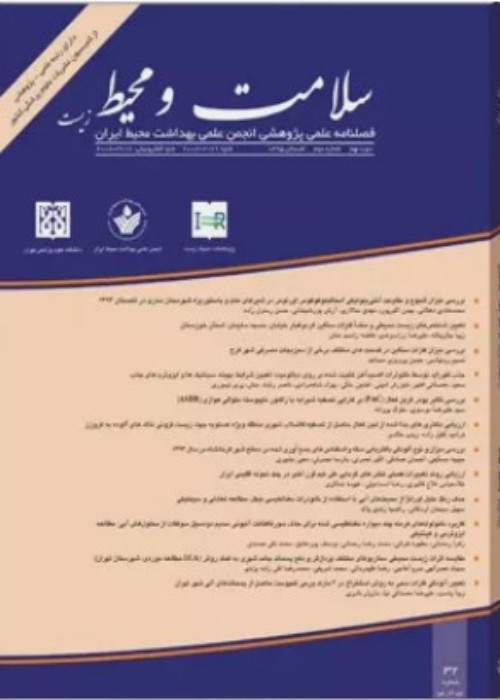Determining the Contribution of Gas Emissions from Cars and Estimating the Distribution of CO Emissions in Enclosed Parking
Author(s):
Abstract:
Background And Objectives
In this study, contribution of exhaust emission and CO distribution was estimated in enclosed residential complex parking.Materials And Methods
This was a descriptive - analytical study consisted of two stages. In the first stage, the emission contribution of vehicles was determined. In order to determine the contribution of exhaust gas emissions, through gas species, only four species CO, O2, CO2, and N2 were measured. Concentration of CO, O2, and CO2 was estimated using data obtained from the vehicle emissions monitoring system. The amount of N2 was estimated from sum ratio of all species, which equals to 1. Then, using computational methods, the amount of the emission contribution from vehicles. In the second phase, to measure the distribution of CO pollutant, gas sampling and collecting was performed using sampling bags made of inert materials with a volume of 10 l at six points. Sampling was conducted in accordance with the requirements of OSHA ID 210. The Obtained data were analyzed using SPSS Ver.16 software and Pearson statistical test (P > 0.05 means there was no significant difference).Results
Maximum contribution was estimated for Pride with amount of 44.4 g/s and minimum contribution was estimated for Tiba with amount of 0.3 g/s. The minimum and maximum distribution value of CO concentration was achieved 3.6 and 69.48 ppm respectively. It was found that no significant relationship was observed between the values of exhaust emissions and CO distribution. However, the distribution of concentration was associated with locations and the number of openings, the number and type of vehicle, time of operation of the vehicle, the vehicle performance, and environmental factors.Conclusion
Measuring vehicles CO emission indicated that the concentration was beyond the permissible level recommended by the World Health Organization at some. Moreover, it was indicated that natural air conditioning is an effective alternative for improving the air quality in built environments and suitable quality in built environments is achievable through reasonable architectural design, without need to spend too much expense.Keywords:
Language:
Persian
Published:
Iranian Journal of Health and Environment, Volume:8 Issue: 4, 2016
Pages:
447 to 458
magiran.com/p1515848
دانلود و مطالعه متن این مقاله با یکی از روشهای زیر امکان پذیر است:
اشتراک شخصی
با عضویت و پرداخت آنلاین حق اشتراک یکساله به مبلغ 1,390,000ريال میتوانید 70 عنوان مطلب دانلود کنید!
اشتراک سازمانی
به کتابخانه دانشگاه یا محل کار خود پیشنهاد کنید تا اشتراک سازمانی این پایگاه را برای دسترسی نامحدود همه کاربران به متن مطالب تهیه نمایند!
توجه!
- حق عضویت دریافتی صرف حمایت از نشریات عضو و نگهداری، تکمیل و توسعه مگیران میشود.
- پرداخت حق اشتراک و دانلود مقالات اجازه بازنشر آن در سایر رسانههای چاپی و دیجیتال را به کاربر نمیدهد.
In order to view content subscription is required
Personal subscription
Subscribe magiran.com for 70 € euros via PayPal and download 70 articles during a year.
Organization subscription
Please contact us to subscribe your university or library for unlimited access!


